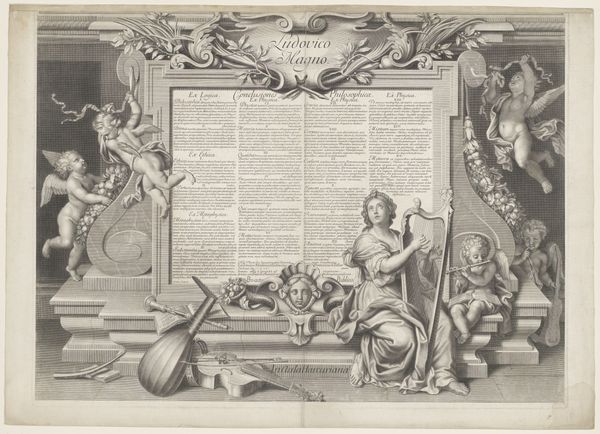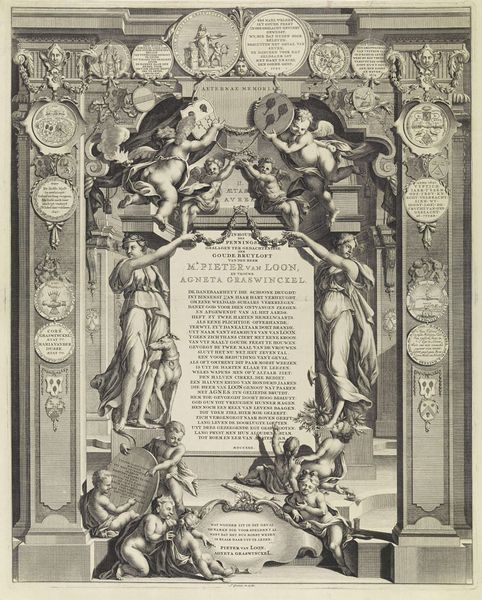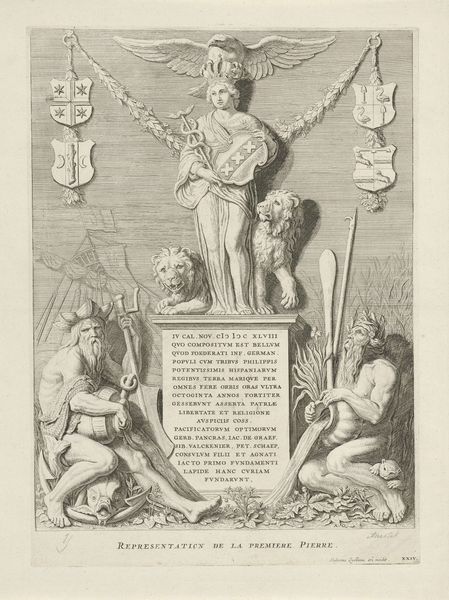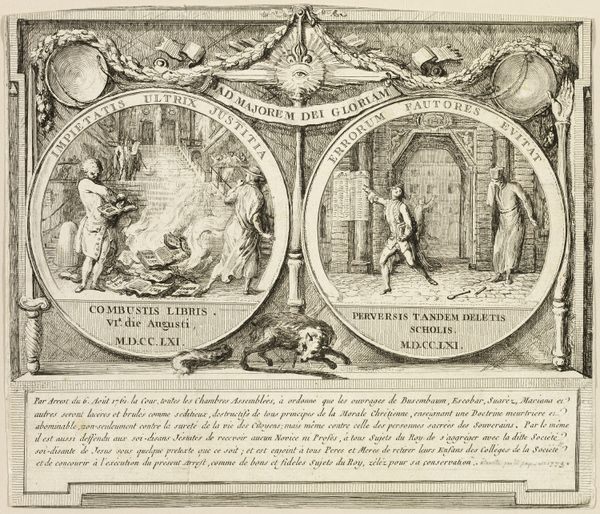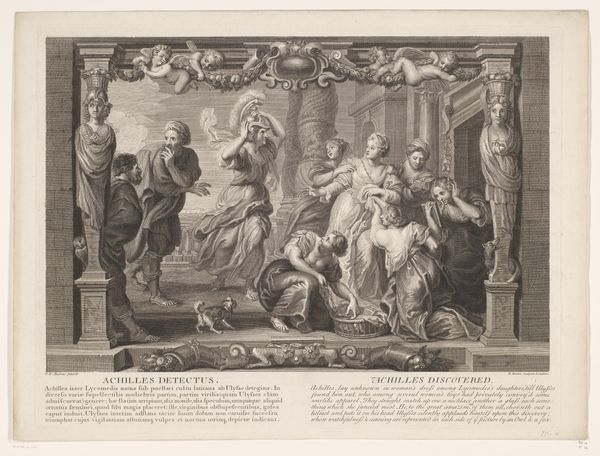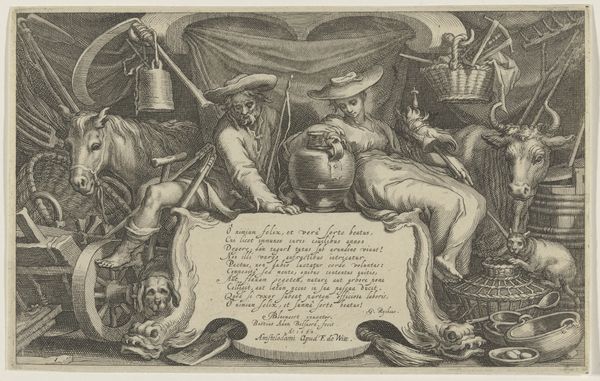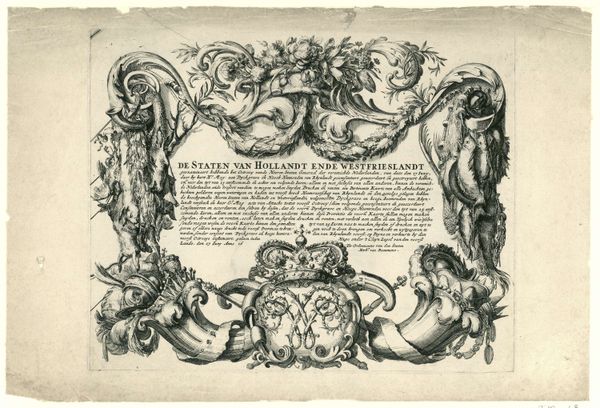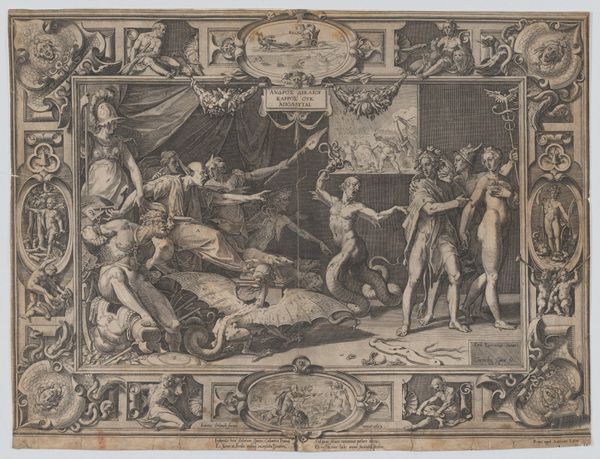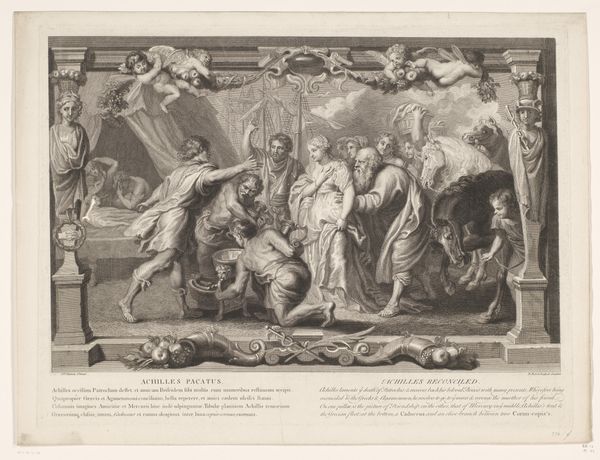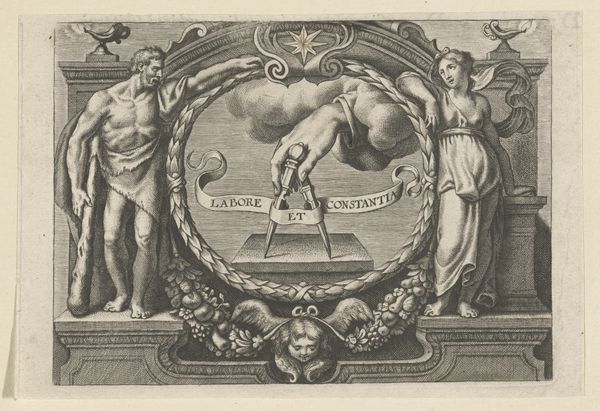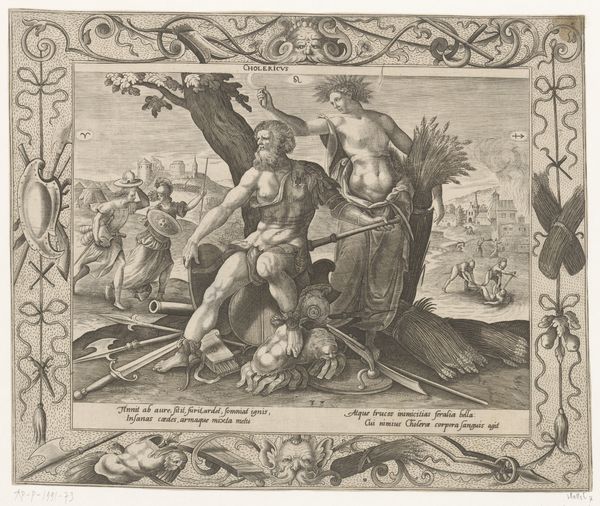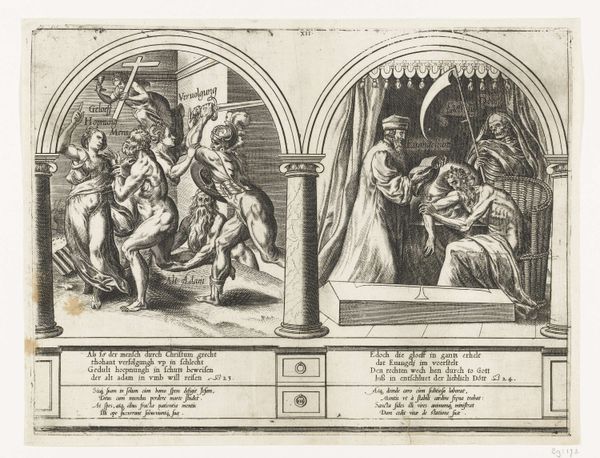
engraving
#
portrait
#
allegory
#
baroque
#
old engraving style
#
history-painting
#
engraving
Dimensions: height 552 mm, width 750 mm
Copyright: Rijks Museum: Open Domain
Curator: This engraving from 1676, created by Francois de Poilly, is titled *Allegorical Portrait of Louis XIV (Lower Part).* Immediately striking, isn't it? Editor: Absolutely. My first impression is that it's meticulously rendered but emotionally detached. I find it fascinating how a collection of symbols can convey so much power but feel utterly impersonal. Is that text block meant to represent a decree? Curator: Precisely! Note the putti enacting allegorical roles around a tableau of royal regalia: a crown and sceptre. This isn't just decoration. The putti activating the drapery could be said to stand for action—literally pulling back the curtain on an era of Louis XIV. This gesture references the king's reign, and its performative aspects. Editor: Speaking of labor, the detail in the engraving is astounding. Can you imagine the hours upon hours spent etching into that metal plate? And for what? Royal propaganda, essentially mass-produced for dissemination. Think of the distribution networks involved; the very material impact on 17th-century society is noteworthy. Curator: But even that dissemination relies on imagery with staying power. Take the Fleur de Lis; it’s carefully etched onto the textiles beneath the regalia as a motif instantly readable to viewers, conveying both French identity and a divine right to rule—imagery is power, even when produced at scale. What emotions do you discern being presented to a contemporary viewer? Editor: Awe, certainly. The symbolic weight would’ve landed squarely on the side of "respect and fear," meant to deter the consumption and ownership of similar items and styles among common folk. Even though this piece's labor has little connection with devotional artworks of the period, there is a spiritual air due to the attention placed on craft and visual storytelling. And what better, or safer, vehicle of allegory and cultural aspiration than innocent putti to act out the roles of both real people, but also personifications of virtue or power? Curator: Well observed, in a nutshell: symbolism backed up by intensive skilled labor creates lasting impressions. A statement that remains surprisingly pertinent. Editor: Agreed. A convergence of material skill and propagandistic intent shaping perception.
Comments
No comments
Be the first to comment and join the conversation on the ultimate creative platform.
